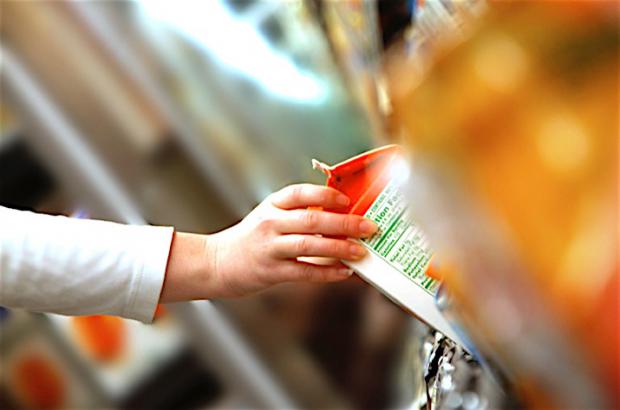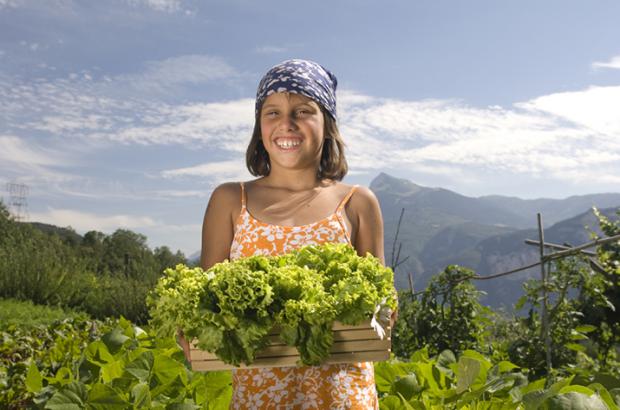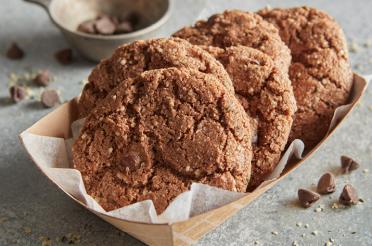Article
Fontina

Visit the Issogne Castle in Italy, and right there, in the frescoes depicting life in the 15th and 16th centuries, next to the ladies, knights and warriors, is a vendor selling Fontina cheese.
Fontina is named for Mont Fontin and the village of Fontinaz, in the Aosta Valley, where it's been made since the 12th century. Production traditionally relies on raw cow's milk from the Valdaostan Red Spotted cows grazing in the valley. Today, the mild, somewhat nutty and fruity, creamy cheese is produced on 200 small dairy farms in the same area, as well as in Denmark, Sweden, Quebec, France and the United States.
Fontina is available rindless as well as with a tan/orange/brown rind. The supple interior is ivory to pale gold and dotted with tiny holes, similar to Swiss cheese. Typically aged about 90 days, Fontina cheese becomes firmer, more robust and nuttier if aged longer. While its texture is still supple when matured more than 90 days, these older Fontinas are, in fact, considered to be hard cheeses. True Italian Fontina has a Designation of Origin seal on the wheel, with an image of the Matterhorn and the word "Fontina" stamped on it. Today, Fontina is also produced in France, Sweden, Canada, Denmark, and the United States (especially Wisconsin).
Swedish-style Fontina is slightly tart and nutty yet still mild and earthy. Depending on its age, it can be mellow to sharp. It's pale ivory to light yellow with a red wax coating and straight corners.
Similar to the Swedish Fontina, Danish Fontina is also slightly tart and nutty with a mild earthy flavor that ranges from mellow to sharp, depending on age. But since the Danish is generally not aged as long, it tends to be milder and creamier. It is pale ivory to light yellow with a red wax coating and slightly rounded corners. Some Wisconsin cheesemakers refer to Danish-style Fontina as Scandinavian-style.
Fontina makes an excellent table cheese and cooking cheese. And soft, young Fontina makes a stellar fondue; the Italian version of fondue (which is called “fonduta”) is made with Fontina, white truffles, eggs, milk, and white wine. Try Fontina in this Three Cheese Fondue.
For appetizers or snacks, pair Fontina with veal prosciutto, Genoa salami and figs. Shred it in bread dough. Serve any Fontina for breakfast, with fruit and breads, in egg dishes and crepes. For a tasty lunch, combine it with pesto and roasted peppers on a sourdough or other hearty bread, or serve it on a roasted pepper panini.
At dinnertime, layer Fontina with polenta slices, then bake and serve with marinara sauce. It's hearty enough to complement roasted meats, too, especially veal; use it to stuff veal meatballs, ribs, or chops. Make it the cheese of choice in your next macaroni and cheese casserole, twice-baked potatoes, French onion soup and pizza or flatbread. It's the perfect choice for this Grilled Olive Oil and Rosemary Flatbread with Vegetables. You can even serve Fontina for dessert, with fruits like melons, peaches and nectarines or added to the pastry dough for an apple pie.
Pair Fontina with fruity wines and light or robust reds like Gamay Beaujolais, Pinot Noir, Barolo or Zweigelt, or a white like Riesling or Gewurztraminer. For non-alcoholic beverages, a ginger ale or tea will do nicely.
Good substitutions for Fontina include mild provolone, Gouda, Gruyere, Emmenthal and Edam.
When shopping, look for Fontina that's even-textured, without discoloration.
The Fontina Producers' Consortium gives two options for storage. One is in a damp cellar, on a wooden shelf, with a temperature of 50 to 53 degrees F. "Every so often rub the cheese with a damp, salted cloth to remove the normal white mould on the rind. Should the cellar be too dry, wrap the cheese in a damp cloth." Or for those with less Fontina preparedness, a fridge will do just fine. They recommend wrapping Fontina in plastic wrap and placing it in the coolest part of the fridge (such as the veggie bin).
Once you try a good Fontina, you're likely to appreciate why it's been a valued cheese for so long. And while it may not inspire you to paint a fresco of it, you'll probably be moved to include it in your cheese repertoire.












